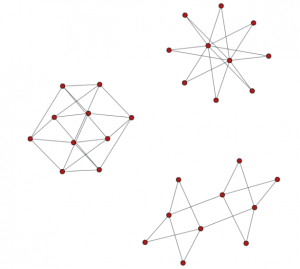France asks US internet giants to ‘help fight terror’
From the post:
Twitter and Facebook spokespeople said they do everything they can to stop material that incites violence but didn’t say whether they would heed the minister’s request for direct cooperation with French authorities.
“We regularly host ministers and other governmental officials from across the world at Facebook, and were happy to welcome Mr Cazeneuve today,” a Facebook spokesperson said.
“We work aggressively to ensure that we do not have terrorists or terror groups using the site, and we also remove any content that praises or supports terrorism.”
…
Cazeneuve [interior minister, France] said he called on the tech companies to join in the fight against extremist propaganda disseminated on the internet and to block extremists’ ability to use websites and videos to recruit and indoctrinate new followers.
The pace of foreign fighters joining the Islamic State of Iraq and the Levant and other armed groups has not slowed and at least 3,400 come from Western nations among 20,000 from around the world, US intelligence officials say.
As regular readers you have already spotted what is missing in the social media = terrorist recruitment narrative.
One obvious missing part is the lack of evidence even of correlation between social media and terrorist recruitment. None, nada, nil, zip.
There are statements about social media by Brookings Institute expert J.M. Berger who used his testimony before Congress to flog his forthcoming book with Jessica Stern, “ISIS: The State of Terror,” and in a Brooking report to be released in March, 2015. His testimony is reported in: The Evolution of Terrorist Propaganda: The Paris Attack and Social Media, where he claims IS propaganda is present on Twitter, but fails to claim any correlation, much less causation for IS recruitment. It is just assumed.
You right to hear IS “propaganda,” if indeed it is “propaganda,” is being curtailed by the U.S. government, France, Twitter, Facebook, etc. Shouldn’t you be the one who gets to use the “off” switch as it is known to decide what you will or won’t read? As an informed citizen, shouldn’t you make your own judgements about the threat, if any, that IS poses to your country?
The other, perhaps not so obvious missing point is the significance of people traveling to support IS. Taking the reported numbers at face value:
at least 3,400 come from Western nations among 20,000 from around the world
Let’s put that into perspective. As of late Sunday afternoon on the East Coast of the United States, the world population stood at: 7,226,147,500.
That’s seven billion (with a “b”), two hundred and twenty-six million, one hundred and forty-seven thousand, five hundred people.
Subtract for that the alleged 20,000 who have joined IS and you get:
Seven billion (with a “b”), two hundred and twenty-six million, one hundred and twenty-seven thousand, five hundred people (7,226,127,500.)
Really? Twitter, Facebook, the United States, France and others are going to take freedom of speech and to be informed away from Seven billion (with a “b”), two hundred and twenty-six million, one hundred and twenty-seven thousand, five hundred people (7,226,127,500) because of the potential that social media may have affected some, but we don’t know how many, of 20,000 people?
Sometimes when you run the numbers, absurd policy choices show up to be just that, absurd.
PS: A more disturbing aspect of this story is that I have seen none of the major news outlets, The New York Times, CNN, Wall Street Journal, or even the Guardian, to question the casual connection between social media and recruitment for IS. If that were true, shouldn’t there be evidence to support such a claim?
Update
Kathy Gilsinan’s Is ISIS’s Social-Media Power Exaggerated? (The Atlantic) confirms the social media impact of ISIS is on the minds of Western decision makers.


